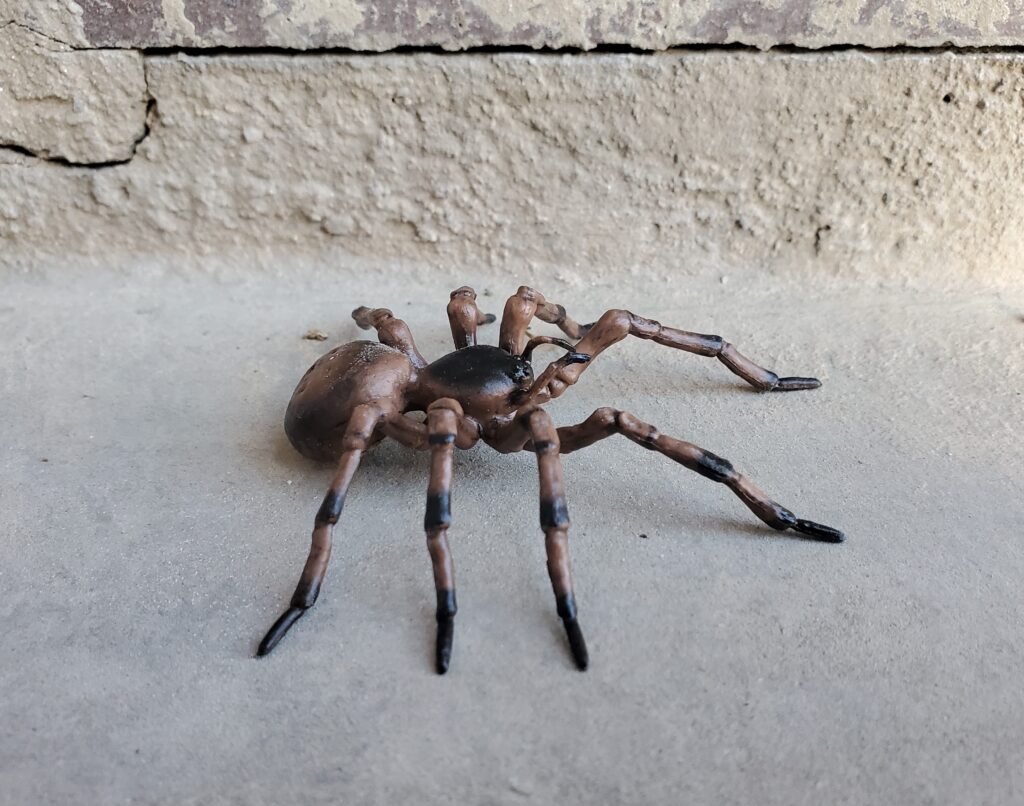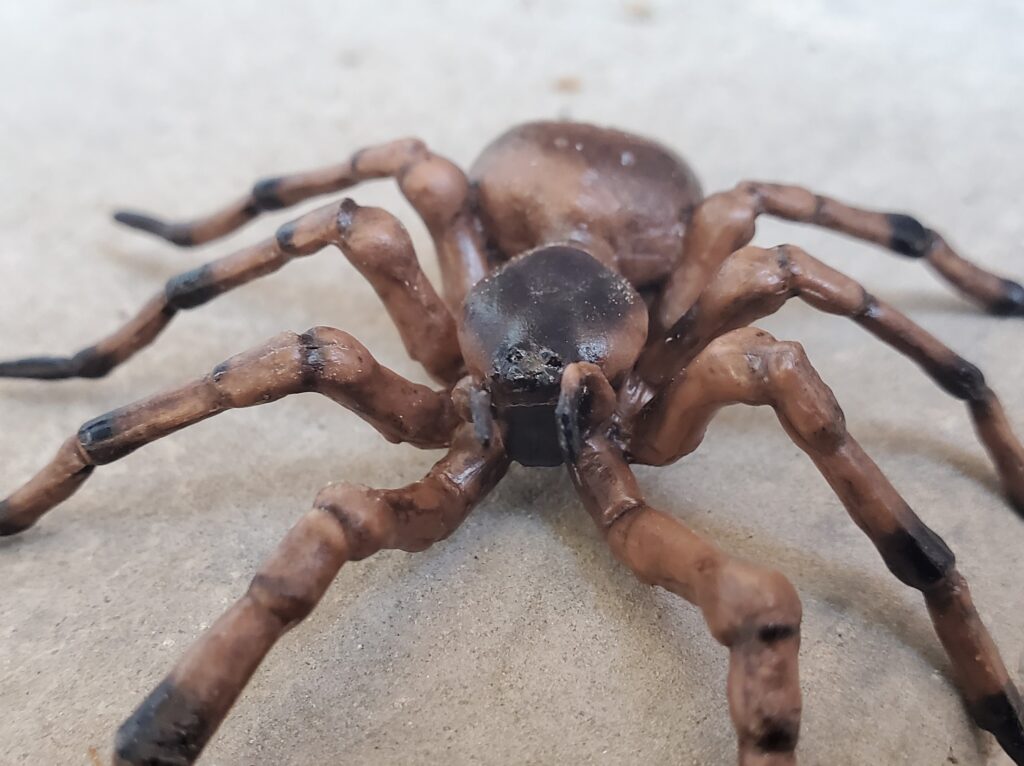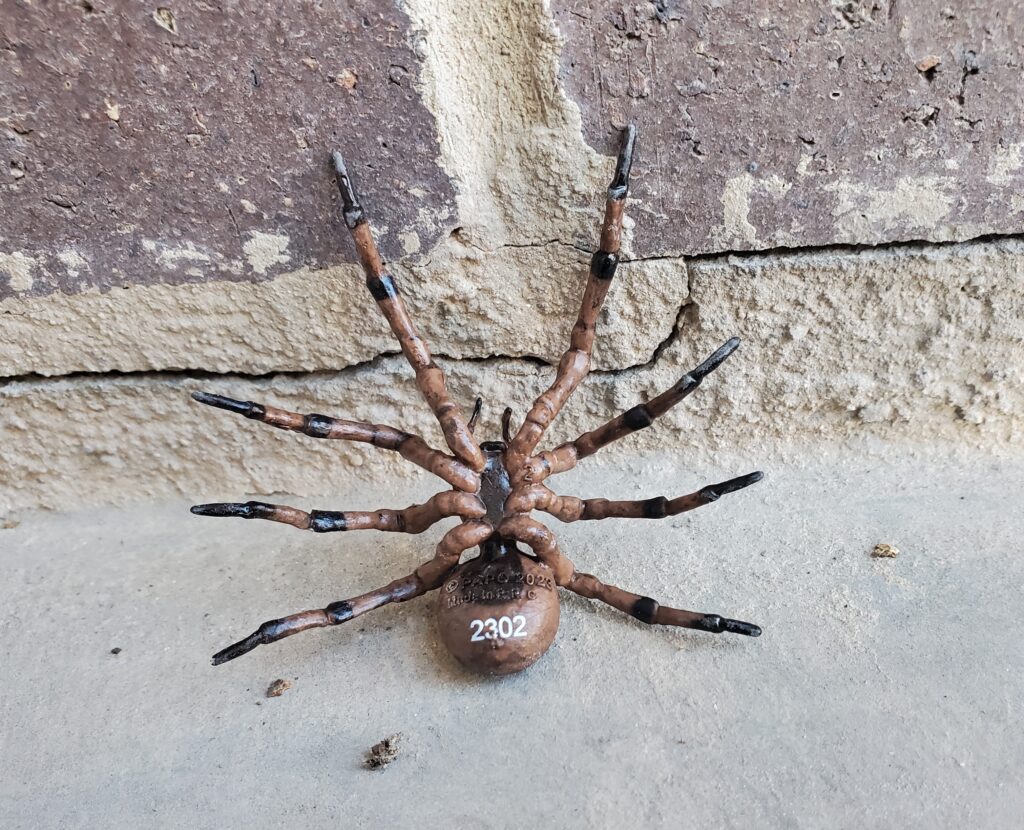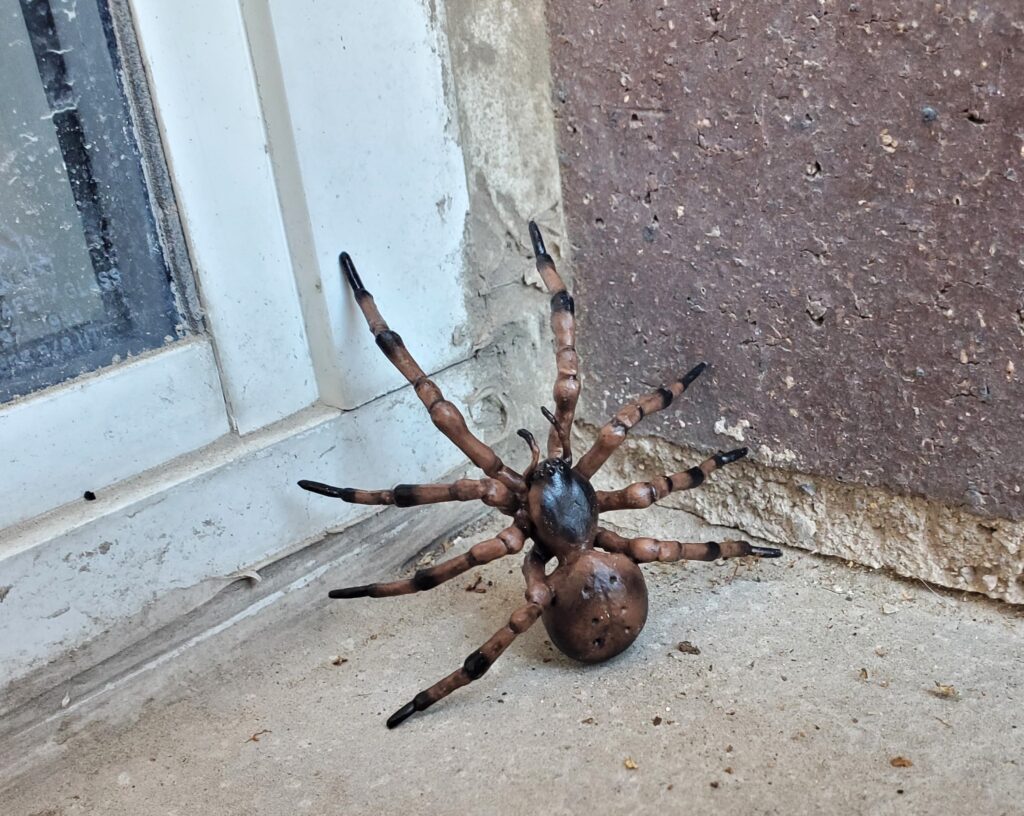Before I start this review, I must again thank our friends at Happy Hen Toys who kindly donated this review sample for the Blog.
When today’s figure was first announced, it was referred to as a ‘common spider’. That left the door open for several ideas on what it might be (especially since the promo pic wasn’t taken at the most diagnostically-helpful angle). My initial thought is that it was the common house spider, also called the American house spider, Parasteatoda tepidariorum. Others suggested it might be Tegenaria domestica, which is called the domestic house spider in Europe. Now that I have the figure in-hand, I am more confident in the identification of P. tepidariorum, based on the shape of the abdomen, the respective lengths of the legs to one another, and the arrangement of the eyes. This is the first ‘real’ figure of P. tepidariorum we have as a toy or figure. I used to possess a composite and wire figure from an unknown Japanese company that came in a little box nested in sythetic fibers, but today’s by Papo is the first in PVC that I am aware of. I was excited for this figure, but also curious how it would live up to Papo’s 2016 wolf spider, which to date I still consider probably the best spider figure ever produced.

Parasteatoda tepidariorum belongs to the family Theridiidae, commonly referred to as cobweb weavers, the family that includes the notorious widows. While the species was first described from Germany, it is believed to be native to South America. Being a synanthropic species, it now occurs nearly cosmopolitan due to being transported by human activity. In cooler climates, they are usually found associated with places with a controlled environment, such in houses and greenhouses. They make webs in places with the most abundant prey and in houses feed on insects commonly considered household pests. The spider possesses a neurotoxin, and have been known to bite people when mishandled and provoked, but the toxin is not considered dangerous to humans.

Parasteatoda tepidariorum is a small spider, with females measuring 5-6 mm in length. Today’s figure has a body length of approximately 2.5 cm for a scale of 5:1-4.2:1 for a female, which I assume the figure is based on the shape of the body and the form of the pedipalps.

The body is a firm PVC while the legs are pliable but not ‘soft’ (they don’t droop if the spider is picked up). Interestingly, the last pair of legs are fused with the abdomen. The sculpt is well done, but the animal itself has a fairly simple morphology. There are three pairs of dimples running down the abdomen, which are not common but may be seen sometimes on spiders. As previously mentioned, the arrangement of the eyes is accurate for the species and family (something most companies do not get right).

The base color is brown with darker accents and highlights on the dorsal and ventral surfaces and at the leg joints. Parasteatoda tepidariorum is highly variable in terms of color, and this is a believable paint scheme. The eyes appear black, but not sure if they are colored black or just in one of the regions of infuscation.

Overall, this is a great figure of a species you are unlikely to get another version of easily, at least for the foreseeable future. It comes highly recommended to collectors of interesting taxa (I feel like I say that a lot on this Blog, lol). Available in the U.S. from Happy Hen Toys here.

Disclaimer: links to Ebay and Amazon on the AnimalToyBlog are affiliate links, so we make a small commission if you use them. Thanks for supporting us!





There are so many of these living in my garage, porches, basement, and house. My arthropod collection is pitiful (been focusing on vertebrates) but I’ll have to prioritize this one and the wolf spider.
If you want to start building some extant arthropods in your collection, but don’t want to get overwhelmed and are concerned about space, I suggest collecting Papo’s. They have probably released close to 20 in the last several years. They are small and are of good quality for their size.
I concur that this is P. tepidariorum rather than T. domestica based on my familiarity with the latter, which I’m extremely familiar with as they are exceedingly common in my UK house and outbuildings. As an animal lover I wish they didn’t give me the creeps but they do. It’s completely irrational but something about them just bypasses the logical part of my brain. I have to ask my wife to take them into the garden, where I’ve built a rockery for them!